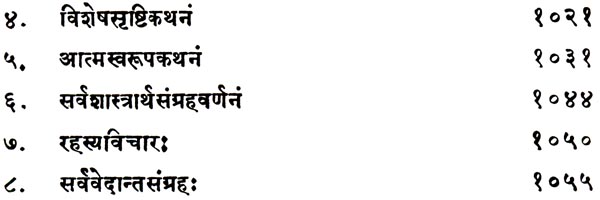Siva is Dakshinamurthy Dakshinamurty is commonly seen in a seated posture. Dakshina means south ( direction ) and Shiva sits under the Banyan tree, and preaches ( facing towards South ), that is why He is called Dakshinamoorthy. His right leg stre. Abstract of Dakshinamurti Samhita. Dear One, Tripura is the ultimate, primordial Shakti, the light of manifestation. She, the pile of letters of the alphabet, gave birth to the three worlds. At dissolution, She is the abode of all tattvas, still remaining Herself – Vamakeshvaratantra. This work is a comprehensive digest on the subject of Shri. Exotic India 2573 Hamline Avenue N Suite A Roseville, MN - 55113 United States of America Phone: +1 347 468 7193. The story goes back to the marriage of Shiva and Sati. After marriage, Rishi Dadhichi had invited Shiva and Sati to his aashram. When the duo were seated there, amongst the many rishis, Shiva saw Rishi Atharva and asked him why he was being uncomf. ( ) - Shri Dakshinamurti Samhita: An Original Text on Sri Vidya Hardcover – April 1, 2014 Hindi Edition by (Acharya Radheshyam Chaturvedi) (Author) 1.0 out of 5 stars 1 rating.
SAGES ENQUIRE
Viddyeshwar Samhita which is classified into twenty five chapters, has a narration in its first chapter which goes as follows-
Once upon a time, the sages were performing a yagya at Prayag kshetra. Sage Suta came to know about this and arrived there. All the sages were very pleased to see him. They requested:-
“Lord! Though we have heard many tales from you regarding the man’s benediction, but today we want to listen to something special. Because in this present era of Kali, when all the castes have forgotten about their respective duties we want to know is there any way to prevent the deterioration in the human values?”
Suta replied:-
“O Great men! Your enquiry has great relevance in this era of Kali. I will certainly tell you about the way by the help of which a man can achieve benediction. Shiva Mahapurana contains the essence of Vedantic philosophy, which gives worldly pleasures as well as Salvation. Mere remembrance of it destroys all the sins of a man. One who studies the Rudra-Samhita attentively, his gravest of sins are destroyed instantaneously. One who studies Rudra-Samhita’ silently, sitting in front of Bhairav-idol, all of his aspirations are fulfilled. A man gets liberated from the sin of killing a brahmin, if he studies Rudra Samhita while circulbulating around a Banyan tree.”
“Kailash Samhita is even superior than Rudra Samhita, as it elaborates upon the meaning of Omkar. Shiva Mahapurana is created by lord Shiva Himself. It contains twelve Samhitas which are – Viddyeshwar, Rudra, Vinayak, Uma, Matri, Ekadash-rudra, Kailash, Shat-rudra, Koti-rudra, Sahastra Koti, Vayaviya and Dharma.”

“Initially it contained one lac shlokas but it was precised to twenty-four thousand shlokas by sage Vyasa. The present Shiva Purana is the fourth one which consists of seven Samhitas. The earlier three Shiva Puranas are unavailable. The scientific analysis of the Vedantic mysteries are the main subject of this divine Shiva Purana. The study of Shiva Purana helps a man to attain Dharma, Artha, Kam and Moksha.

Suta continued with his narration:-
“During the initial period of ‘Svet Varaha Kalpa’. Six prominent sages collected near Triveni and started debating as to who was the greatest deity, among Brahma Vishnu and Mahesh. Their debate remained inconclusive, so they went to lord Brahma to seek the answer.
Lord Brahma told them:-
“O revered Sages! The source of Vishnu, Rudra all the deities including myself and all the other creations is none other Mahadeo. Union with the Shiva should be the objective of a man to attain that objective. Listening to the qualities of Lord Shiva, singing devotional songs in his praise and contemplating on him are the greatest means, which help to unite with Shiva.”
Purification of the mind by the help of doing worship and chanting the name of God is called contemplation. Singing devotional songs in the form of stotra, or hymns of the vedas or even in one’s own language is called Kirtan.

The above mentioned three activities are the supreme means to attain liberation


Suta Samhita Of Skanda Purana
- Salokya consists of the privilege of living in the same world as that of Shiva.
- Sarupya having an appearance similar to that of Lord Shiva, being free from mortality.
- Samipya enables the individual soul to have access to the Lord.
- Sayujya, the highest one, can be had by means of knowledge only. It is an indescribable state of communion with the Lord.